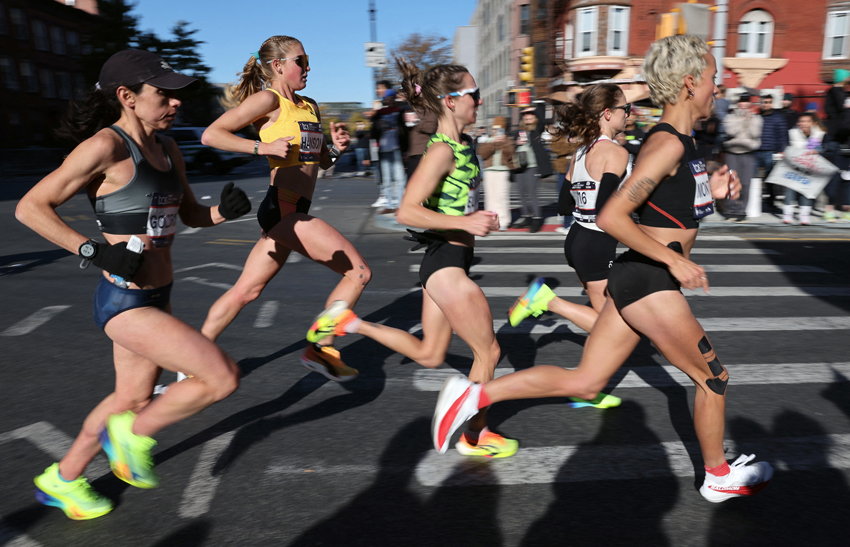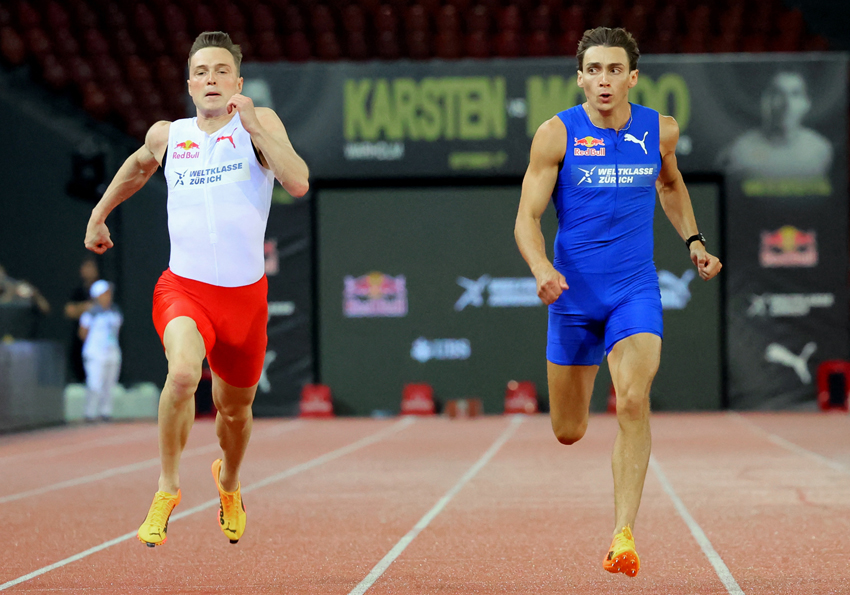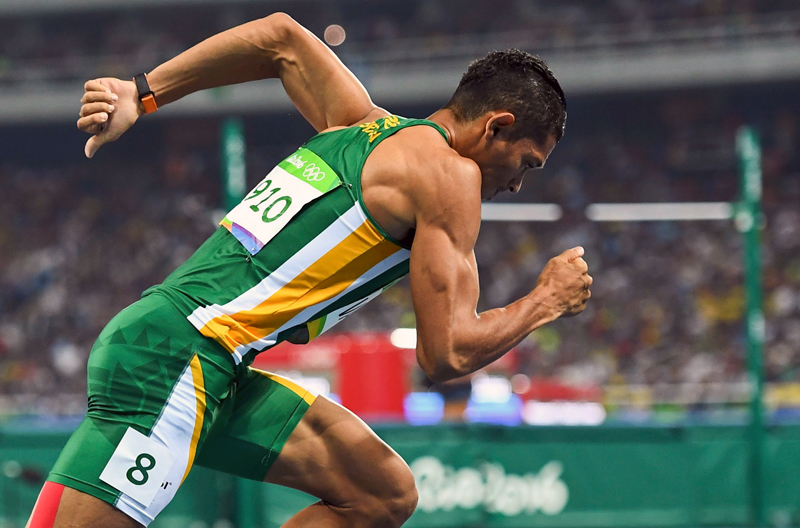Sports technology: are you a victim of technostress?

From simple bike computers to GPS devices and power metering systems, it’s never been easier to monitor your performance and collect data to help you plan your future training sessions. Many athletes who use this technology find it extremely useful and it popularity is unlikely to falter, especially as the increasing use of artificial intelligence (AI) is set to extend and broaden its capabilities.
Does digital tech always work?
Despite the undoubted benefits of using digital technology in training and racing, more recent research has begun to emerge that it can also come with pitfalls. You might think that pacing a time trial or tailoring a strength-training session with the use of digital monitoring and feedback information will always put athletes at an advantage. Surprisingly however, this is not always the case. For example, some research on cyclists and electronic feedback carried out in 2016 (which we reported at the time) found that providing this feedback didn’t necessarily improve performance(1).
When cyclists who didn’t receive any feedback during a time trial were compared with those who were able to continuously consult feedback information on speed, heart rate, power output, cadence, elapsed time, and elapsed distance during their time trial, the cyclists using feedback did not perform significantly better than the no-feedback group - nor was there any real difference between the average power outputs per kilo of body mass of the two groups! Moreover, the perceived ratings of exertion for the time trial were the same regardless of whether the cyclists had feedback or not.
This research suggested that experienced cyclists were able to use simple bodily and environmental information - eg “How am I feeling and how hard am I breathing?” - to control and adjust their effort levels and achieve comparable time trial performances to when feedback was available. Indeed, the researchers concluded by questioning the necessity of the presence of in-race instantaneous task-related feedback via electronic devices for maximising performance.
Similar findings emerged from a 2020 study on club-level cyclists who completed two 20km time trials on different days, one with feedback (power output, cadence, gear and heart rate) and one without feedback(2). Once again, neither time-trial performance nor pacing behaviour were statistically different between the feedback and no feedback trials. Furthermore, the perceived exertion of the cyclists between their feedback and no feedback trials was no different.
Can sports tech impair performance?
Another 2020 study compared different modes of feedback (multiple vs. single) on 30-minute cycling time-trial performance in cyclists and triathletes(3). Ten non-cyclists and 10 experienced cyclists/triathletes each performed two 30-minute self-paced cycling time-trials separated by 5-7 days, either using a single feedback (elapsed time) or multiple feedback modes (power output, elapsed distance, elapsed time, cadence, speed, and heart rate. The fascinating finding was that while the non-cyclists’ performances did not differ between multiple and single feedback trials, the cyclists/triathletes’ time-trial performances were very significantly impaired with multiple feedback (227 watts) compared to single feedback (287 watts), despite adopting and reporting a similar pacing strategy and experiencing similar perceptual responses.
How could having access to a large amount of information feedback act to impair time trial performance? Researchers believe this occurs via an ‘interference effect’. Prior research shows that in physically and mentally demanding dual-tasks such as endurance cycling time-trials, when complex cognitive tasks are also given during that task, mental fatigue can occur more rapidly, which causes a reduction in exercise intensity(4,5). As a consequence, the study authors recommended that “overloading athletes with feedback is not recommended for cycling performance”
What is technostress?
The interface between the brain and the environment in which we are in is complex. However, as noted above, when the brain has a process a large amount of information, the cognitive loading can have negative performance effects. Therefore, it’s clear that while offering many potential performance benefits, digital technologies can in some circumstances impact athletes negatively. While there’s little research on this aspect of technology from the field of sports, the concept of ‘techno-stress’ causing by digital data overload is something that has been well recognized in the general population for over a decade(6). Information overload resulting in technostress is not just about potential performance losses at the time, for example when monitoring data during a time trial. It is actually a much broader concept leading to many other consequences such as relentless psychological pressure to perform, or negative emotions when comparing your data to that of others.
New research
To try and lift the lid on the phenomenon of technostress and how it might arise and impact athletes, a team of German researchers has published a recent paper on this topic(7). Published in the journal ‘Frontiers in Sport and Active Living’, this research investigated how the technostress can specifically affect athletes - in particular the unintended side effects of self-tracking in cycling and triathlon, and to identify stress factors that can have a negative impact on athletes’ willingness and ability to perform.
To carry out this investigation, they used something called the ‘transactional stress model, which explains the development and coping process of stress(8). The model shows how stress reactions are shaped by the interplay of sequential and parallel processes, and where cognitive evaluation processes play a central role in determining how individuals interpret and react to stressors (see figure 1). Thus, the same stress factor(s) can be evaluated differently by different people, which leads to various stress reactions. This individual and subjective nature of the stress experience is a core aspect of the transactional stress model.
Figure 1: Transaction model of stress
You need to be logged in to continue reading.
Please register for limited access or take a 30-day risk-free trial of Sports Performance Bulletin to experience the full benefits of a subscription. TAKE A RISK-FREE TRIAL
TAKE A RISK-FREE TRIAL
Newsletter Sign Up
Testimonials
Dr. Alexandra Fandetti-Robin, Back & Body Chiropractic
Elspeth Cowell MSCh DpodM SRCh HCPC reg
William Hunter, Nuffield Health
Newsletter Sign Up
Coaches Testimonials
Dr. Alexandra Fandetti-Robin, Back & Body Chiropractic
Elspeth Cowell MSCh DpodM SRCh HCPC reg
William Hunter, Nuffield Health
Keep up with latest sports science research and apply it to maximize performance
Today you have the chance to join a group of athletes, and sports coaches/trainers who all have something special in common...
They use the latest research to improve performance for themselves and their clients - both athletes and sports teams - with help from global specialists in the fields of sports science, sports medicine and sports psychology.
They do this by reading Sports Performance Bulletin, an easy-to-digest but serious-minded journal dedicated to high performance sports. SPB offers a wealth of information and insight into the latest research, in an easily-accessible and understood format, along with a wealth of practical recommendations.
*includes 3 coaching manuals
Get Inspired
All the latest techniques and approaches
Sports Performance Bulletin helps dedicated endurance athletes improve their performance. Sense-checking the latest sports science research, and sourcing evidence and case studies to support findings, Sports Performance Bulletin turns proven insights into easily digestible practical advice. Supporting athletes, coaches and professionals who wish to ensure their guidance and programmes are kept right up to date and based on credible science.









